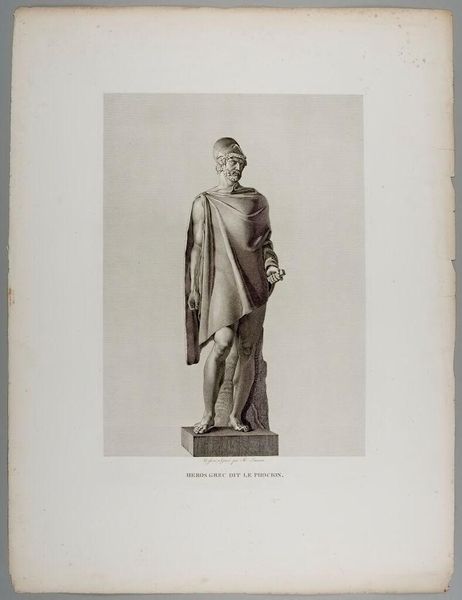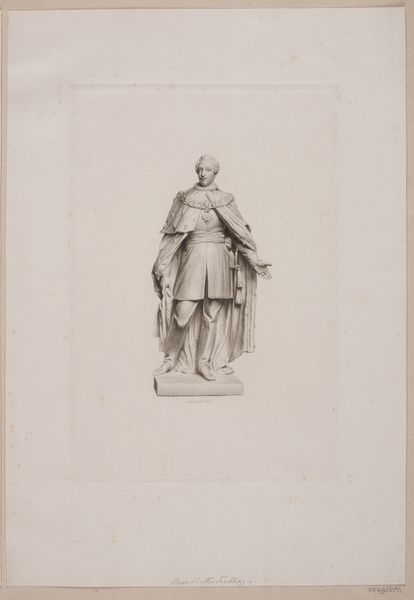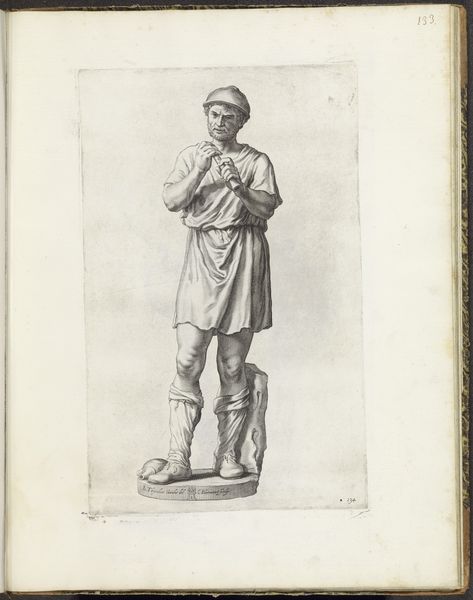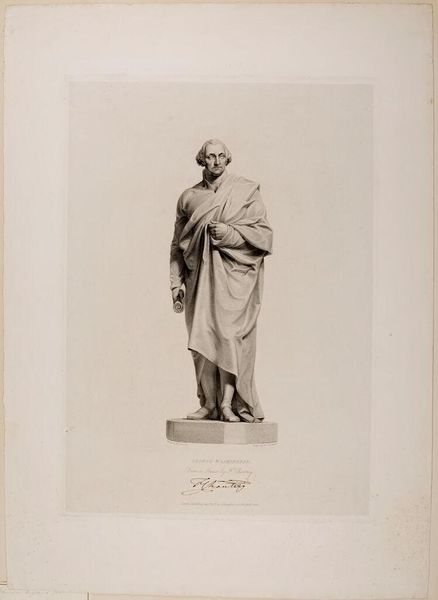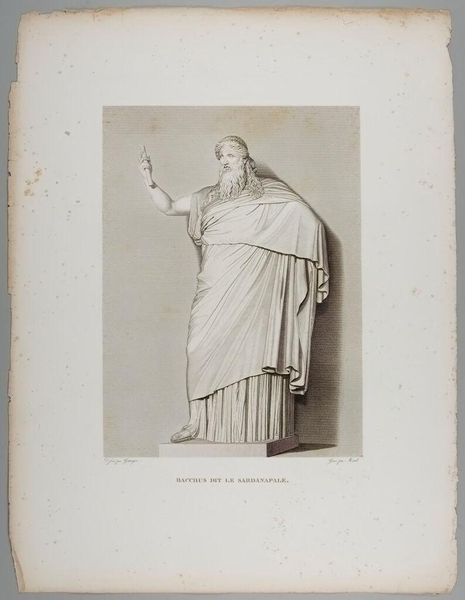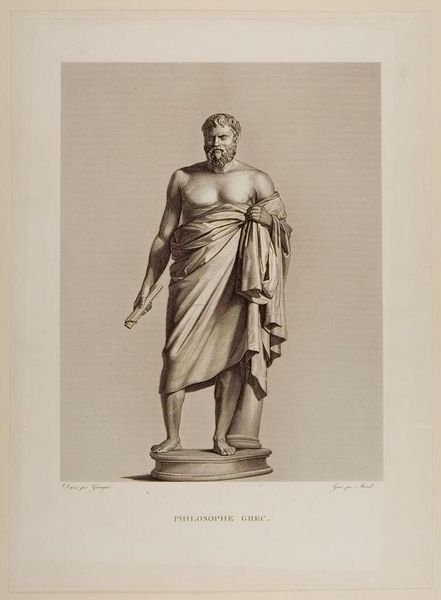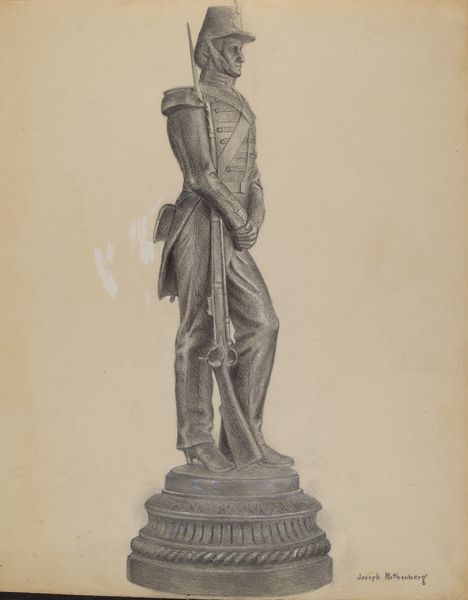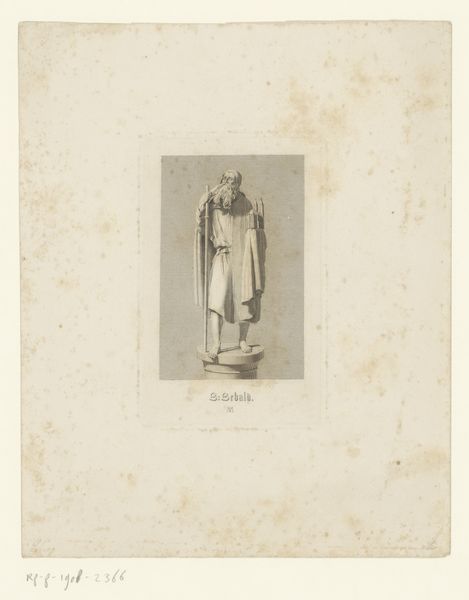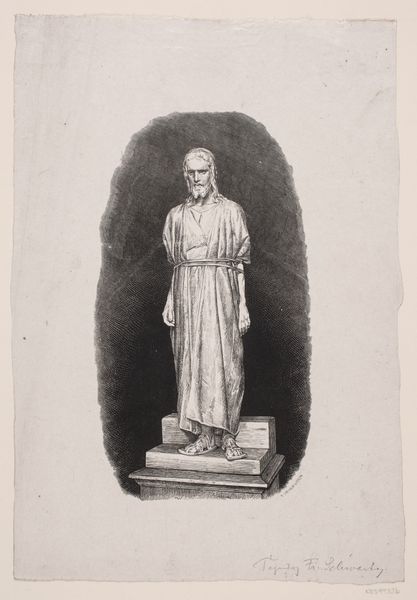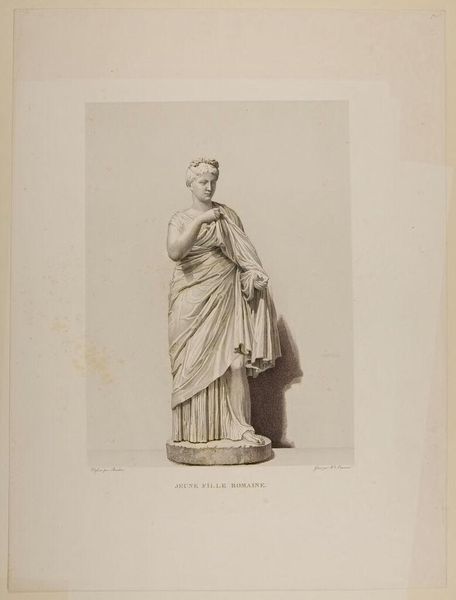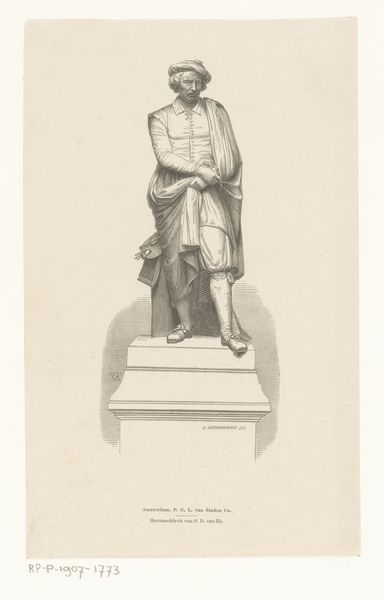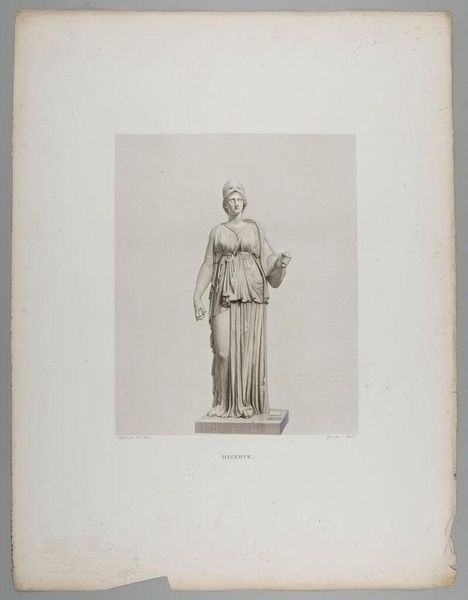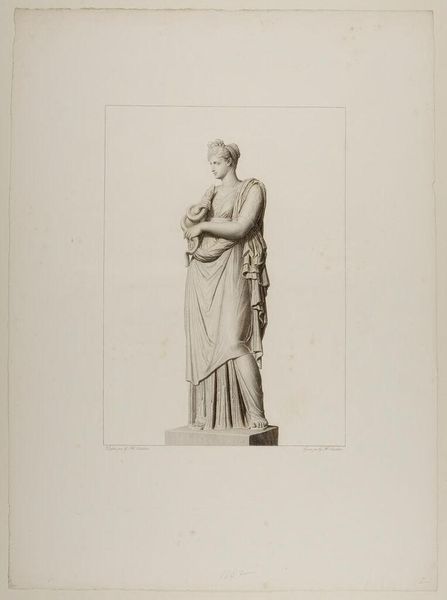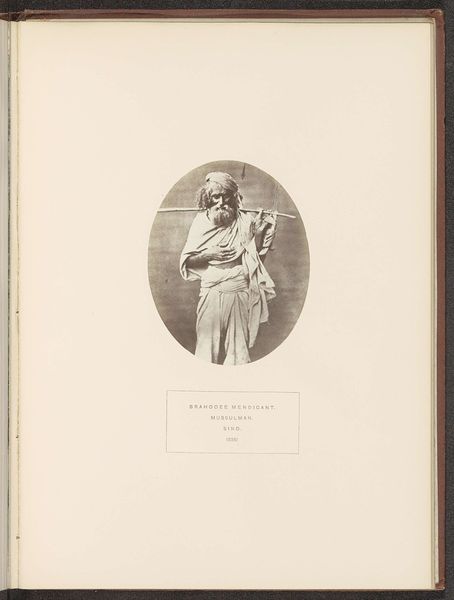
Sextus of Cheronia, after the Antique 18th-19th century
0:00
0:00
Dimensions: plate: 47 x 34.5 cm (18 1/2 x 13 9/16 in.)
Copyright: CC0 1.0
Curator: This is Christian Gottfried Schulze's print, "Sextus of Cheronia, after the Antique." Editor: It has such a stoic, almost severe quality, doesn't it? Very imposing. Curator: Indeed. Schulze rendered this using engraving, a process that inherently involves intense labor. It's a copy, but one made through demanding craft. The consumption of such images perpetuated classical ideals. Editor: Yes, and the rise of prints like these coincided with the growth of museums and public collections. They were vital tools in disseminating classical forms and, by extension, certain cultural values. Curator: Exactly. The materiality of the print allows for wider circulation. Consider also the relationship between artist and model, and how the print flattens sculpture into a readily consumable item. Editor: That tension highlights how art institutions shape our understanding. It’s fascinating to see how an artist interprets and then disseminates something so inherently three-dimensional. Curator: A reminder of how context and material conditions shape our experience of even the most timeless subjects. Editor: Precisely. It brings a historical distance to it, yet keeps Sextus, and his stoicism, very much in view.
Comments
No comments
Be the first to comment and join the conversation on the ultimate creative platform.
